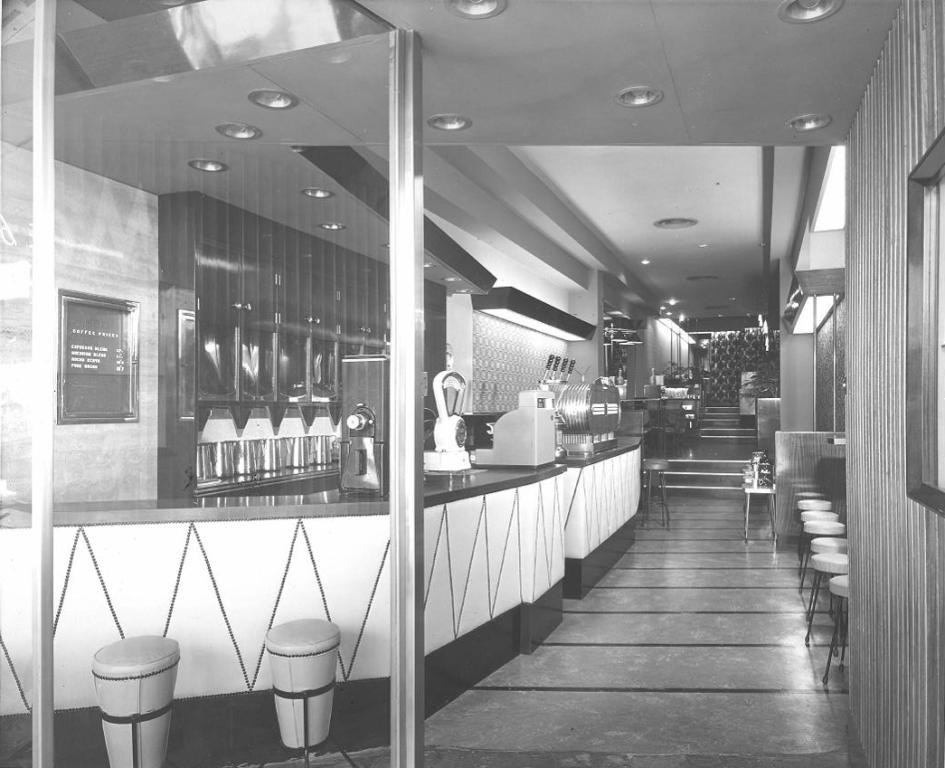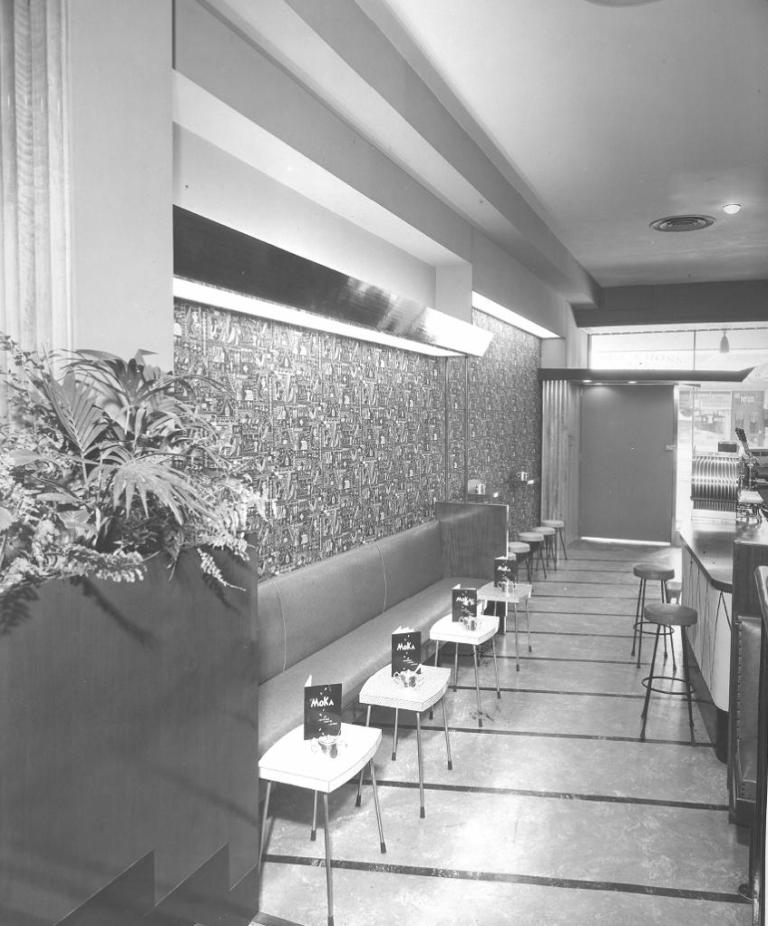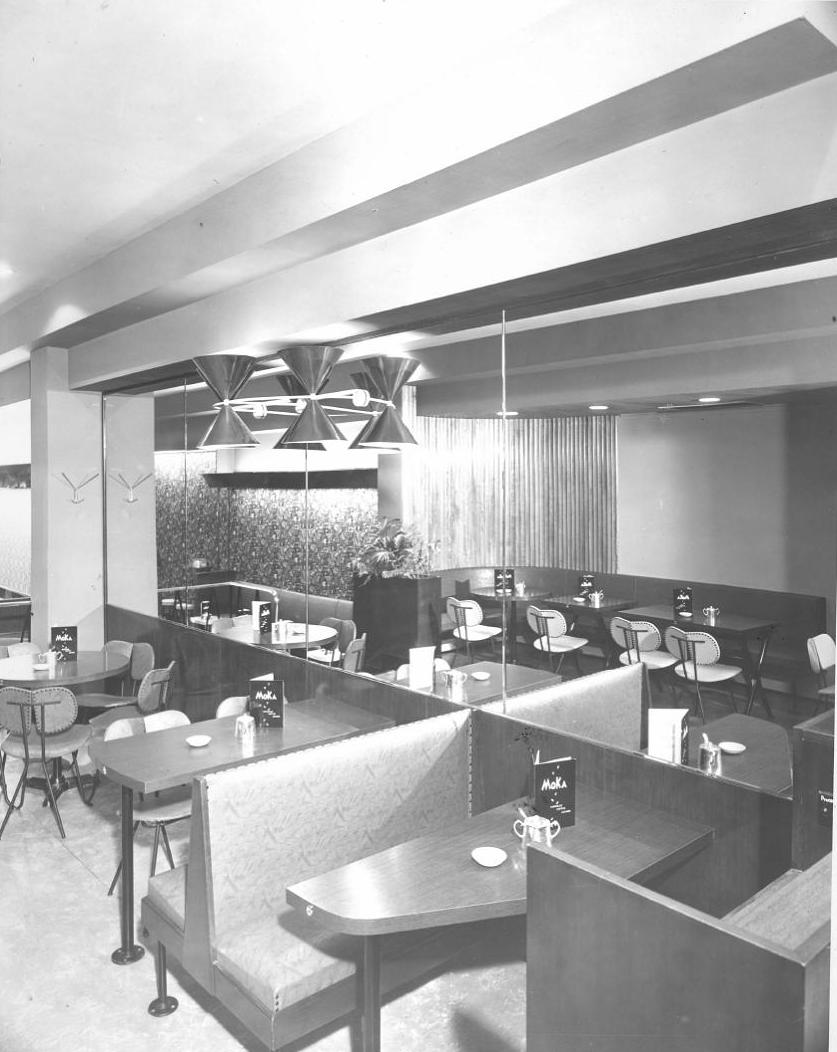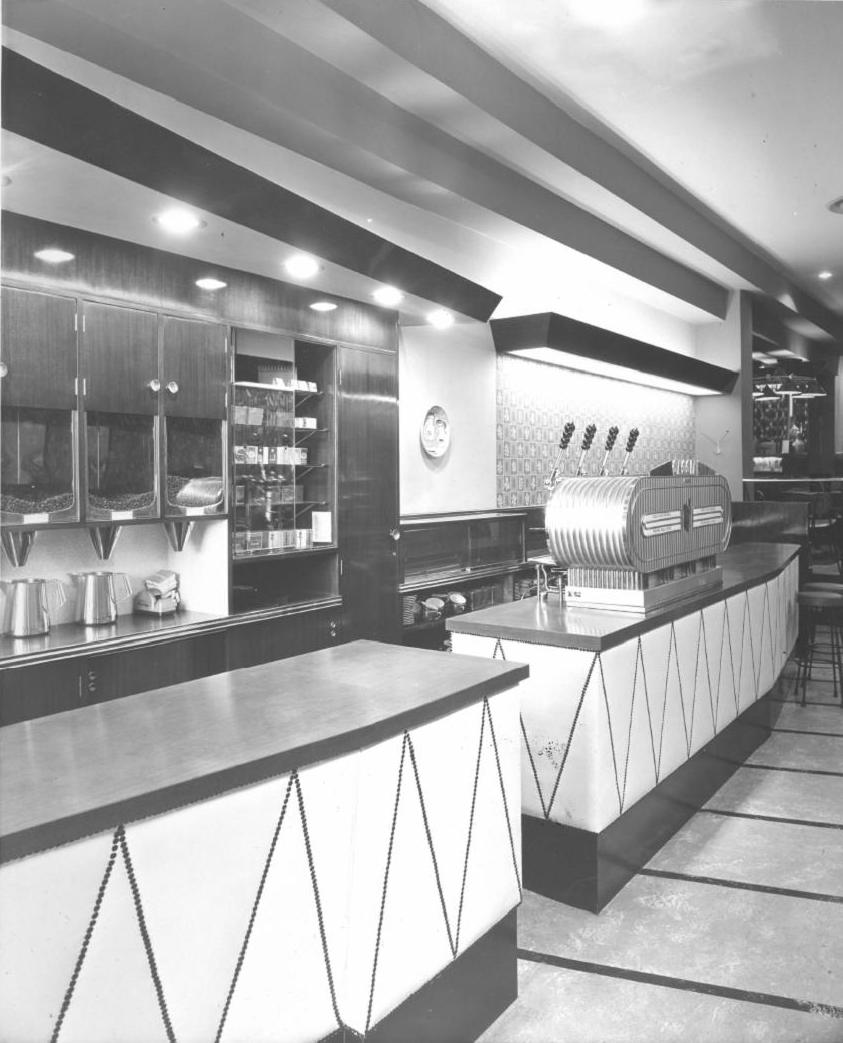November 10 - 16, 2013: Issue 136
The MoKa at Kings Cross
By George Repin
Espresso coffee is a complex beverage, requiring a special blend of coffee beans, roasted darkly, finely ground, densely packed and quickly brewed under pressure.
Crema, the ultimate demonstration of a well prepared espresso is the foamy golden brown foam on top of a serving of the coffee.
Achilles Gaggia designed, patented and introduced the first piston-lever machine in 1938. The Gaggia company produced its first machine for commercial use in 1948. Steam had previously been used to generate sufficient pressure to force water through finely ground coffee. The advantage of the piston-lever concept was that pressure was developed by a spring-loaded lever and piston instead of steam, removing the need to heat water above boiling to brew the coffee. Too high a temperature is detrimental to the flavour.
In the early 1950s H.C. Bancroft, acquired the agency for Gaggia Coffee Machines in Australia and opened a demonstration Italian bistro-style restaurant in the Central Business District of Melbourne, featuring Gaggia.
After visiting Bancroft’s business, as a Director of Repin’s Coffee Inns, I went to Europe in 1954 to explore developments in coffee shop design. While in Italy, I looked not only at coffee shops and bars but also visited the factories of a number of firms making machines using the piston-lever principle, including Gaggia and Faema.
The decision to open the MoKa as a top of the range, modern coffee lounge and to use a Gaggia machine arose from that study tour.
When the MoKa opened on 1 December, 1955 it was an instant success. An article in the February, 1956 issue of Hotel and Café News - titled Class Comes to the Cross – described it as “An elegant coffee lounge at Kings Cross N.S.W. attracting an elegant clientele and setting a high standard”.

View looking into the shop.
Working with George Watkins, then chief designer for Frank G. O’Brien, ideas brought from Europe were built in to the design of the shop. The premises were not easy to work with because they were narrow at the street frontage, widening out and then again narrowing - and set on four levels.
In keeping with the then trend to open up a complete interior view from the street the entrance was glassed and the door, when opened, became an unidentifiable part of the right hand wall.
The front section was essentially self-service, with padded bench seating along the wall, fronted by small movable coffee tables, facing the sleek counter topped with matt Formica in rich red mahogany. Here, as a prominent feature, stood the Gaggia machine. Trays of continental open sandwiches were offered to patrons in this area. Table service was provided on the other three levels from a kitchen at the back.

Front section looking toward the door.
Copper brown crockery, specially commissioned from Gebr. Bauscher in Germany, bearing a new Repin’s logo, was a feature. Cups were in two sizes – small especially for espresso (which many people now call “short black”) and large ones for long black andcappuccino. Coffee was offered only in these three forms.
The décor was modern but subdued – the colour scheme both relaxing and exhilarating. Two Italian Gambone pottery pieces complemented the décor.
Staying open late into the evening the MoKa proved popular as a stop for a final cup of coffee after the theatre for many of those on the way home.

Table service section.
While never used at the MoKa commercial espresso coffee machines with an electric centrifugal pump to supply constant pressure of 9 bar were developed from 1961, replacing the spring-loaded lever and piston system The operator was freed of the physical effort required for the latter. Today machines can be operated by the touch of a button.

The Gaggia machine in the front section.
Copyright George Repin 2013. All Rights Reserved.